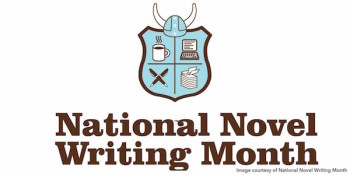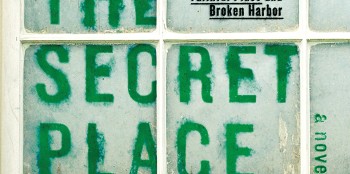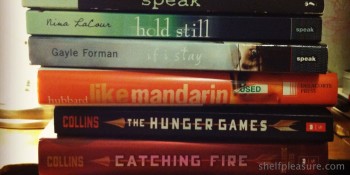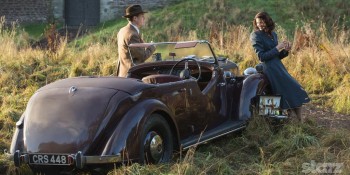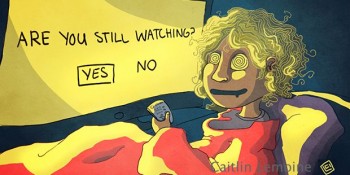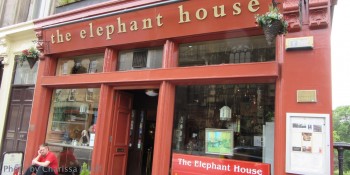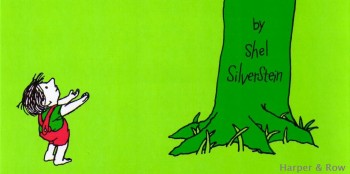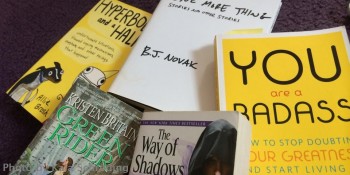Behind every television show, movie, or book I enjoy and then obsess over each week in this space, you will find an intense creative process, embarked on by a writer with a vision and a pen (or a typewriter or a MacBook). As someone with academic degrees in writing and a love for fiction, I’ve always fantasized about creating my very own novel. I have made a few feeble attempts in the past, littered with false starts, discarded drafts, and even one manuscript that made it all the way to chapter 3 before the flash drive was misplaced, likely never to be seen again.
But this month, I’ve had a good excuse to throw myself wholeheartedly into a brand new attempt at achieving my dream.
Writing a 50,000-word novel in a month is a daunting task, yet that is precisely what you commit to when you sign up for National Novel Writing Month. NaNoWriMo is a non-profit organization that, according to its mission statement, “organizes events where children and adults find the inspiration, encouragement, and structure they need to achieve their creative potential. Our programs are web-enabled challenges with vibrant real-world components, designed to foster self-expression while building community on local and global levels.”
Of the many programs NaNoWriMo offers, one of the most popular takes place every November, when writers the world over sign up with the goal of drafting a 50,000-word novel by 11:59 p.m. on November 30. I had never participated in NaNoWriMo, though I know several people who have done it multiple times. About two hours before the calendar turned over to November this year, I decided on impulse to make the plunge. I had no outline, no concept — I didn’t even know who my characters would be — but I decided to give it a shot. If I were ever going to write a novel, I might as well start now.
I spent a large portion of Day 1 cleaning my room and organizing my computer, making sure I had a comfortable place to work. By the time I finally sat down to write, I still wasn’t sure what I would be writing about, but I thought I knew who I would be writing about. There’s a character that had been floating around in my head for a couple years. I didn’t know her story yet, but I knew she wanted it told. By the end of that day I had written over 1,200 words. Not bad considering I hadn’t had a clue what I was going to write about when the day began.
The NaNoWriMo goal is to write at least 1,667 words per day in order to reach 50,000 by the end of the month. I set my goal at trying to reach at least 2,000 per day, knowing that most novels tend to average much more than 50,000 words (especially if you happen to have the middle initials R.R.).
Throughout the first week, I was pretty successful at attaining my goal word count. By the end of Day 7, I had over 14,000. It was rather exhilarating for me to look at that word count and know that I had created all that. My master’s thesis had been over 27,000 words, but a large percentage of that was research-based, not entirely creative writing. So 14,000 words on a creative writing project was a big deal for me, and that was just the beginning.
I’m usually the type of person who likes to have a plan for everything and, in the past, that was my approach to creative writing as well. I would formulate an outline in my head of what I wanted the story to look like — sometimes more detailed than others — and then attempt to write to the outline. As you can tell from my earlier confession of never finishing anything I’ve started, I wasn’t ever very successful that way.
Since I had signed up for NaNoWriMo without any planning, I decided my entire novel would be written that way. I’ve rarely sketched out what I’m going to write more than a day ahead — and, most of the time, I don’t know where it’s going when I sit down. Over the last couple of weeks, I’ve discovered that outlining may not be all it’s cracked up to be. I’m more than halfway toward the 50,000-word goal and I still don’t know from day to day what twists and turns it’s going to take. Writing this novel has been like an archaeological expedition — I don’t know where the story is going, or how it’s going to end.
I have always had this lingering doubt in the back of my mind that I would never actually be able to write an entire novel because, while I might come up with good broad strokes for a novel, I wouldn’t be any good writing the smaller details and the less action-oriented scenes. I’ve never thought I would be very good at coming up with pages of dialogue or crafting realistic conversations between characters, but I’m doing it. Each day I sit at my computer with no idea what’s going to happen next, and I slowly uncover my characters’ next moves. Sure, it’s just a rough draft, and I guarantee it’s not National Book Award material, but I’m having fun discovering my characters and proving to myself that I can do this.
Some days I can average 1,000 words per hour and other days I stare at my computer screen for what seems like hours and only get 600 words written. It hasn’t always been easy, and there are some days when I just can’t figure out what my characters are going to do next. But I keep persevering because this goal is one worth achieving.
As of this writing, my novel is at just over 33,000 words, I just started chapter 14. This is officially the most I’ve ever written on one project, and while I’ve slowed down a little, I am not even close to giving up, which is the biggest accomplishment I’ve made so far. While I’m a little behind in my goal, I’m still within sight of finishing the 50,000 words by November 30, and that will be a huge accomplishment.
If I’ve learned anything this month, it’s that I can surprise myself with how much of a Big Thing I can do if I set my mind to it and really commit. I’m so glad I took the leap and signed up for this. While I haven’t done much other than work, sleep, and write this month, at least by the end of it, I’ll have succeeded in my goal of writing a novel, and that means a lot this girl who has dreamed of being a writer her entire life.
Maybe this novel — or a subsequent one, when I’ve honed my skills a bit — will inspire another fangirl like me.
